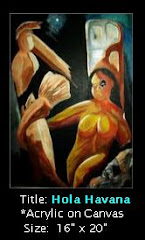Sixty years ago this year a revolution was taking place in American music. Big Bands were on the way out, and something new and exciting was beginning to emerge.
Something that would eventually lead (for better or worse) to rock & roll.
That `something’ was the promotion (and some might say `perfection’) of the electric guitar as a lead instrument, by none other than the incomparable Les Paul.
Electronically amplified guitars had been around since the 1930s, a necessity for boosting the volume when played with orchestras. And electric `steel’ or slide guitars found use in Western Swing and Hawaiian music during the 1930s and 1940s.
But the solid body electric guitar best known today was invented in 1946 by Les Paul. Born Lester William Polfuss, Les performed on the radio in the 1930s and with a variety of orchestras, including Fred Waring.
During the war years, he found work in Hollywood playing on NBC radio shows, and performing with with Bing Crosby, The Andrews Sisters, and Nat King Cole.
His early attempts to create an electric guitar nearly ended in disaster in 1940 when he came close to electrocuting himself. In 1948, he was involved in a near-fatal car accident, shattering his elbow.
Warned that he would never regain full mobility of his arm, he had his doctors fuse his elbow at a roughly 90 degree angle, to enable him to eventually play the guitar again.
In a bit of irony, one of Les Paul’s musical heroes was jazz and gypsy guitar player Django Reinhardt, who had lost two fingers in a fire in the 1930s, and who overcame that disability to become one of the great jazz guitarists of the ear.
The driver of the car was country-western singer Colleen Summers, whom he’d met in 1945. He changed her name to Mary Ford in 1948, and they began touring together, and eventually married.
Together, Les Paul and Mary Ford became the hottest recording duo in the 1950s, racking up 40 singles, numerous albums, and selling millions of records.
And along the way, they changed the way music was made.
Aside from his impressive guitar licks, trills, and chording techniques, Les Paul practically invented multi-track recording, overdubbing (sound on sound), and echo and delay effects.
He humorously called his invention his `Les Paulverizer’, a `little black box’ that enabled him to `play with himself’, and for Mary to harmonize with herself, to tremendous effect. He could make Mary sound like a choir, and himself sound like a platoon of guitar players.
The sound was unique, distinctive, and very, very popular.
In 1950, Les and Mary, along with rhythm player Eddie Stapleton –aided and abetted by the the Les Paulverizer – appeared on weekly NBC radio show, called the Les Paul Show.
The banter between Les, Mary and Eddie ranges from mediocre to just awful . . . but the music . . . the music is magic.
And thankfully, the music makes up 90% of the show.
The Internet Archive has 19 of these 15-minute shows, including the audition show. You can download the entire collection (64 Megs) HERE, or the individual shows below.
LP-500330Audition.mp3 3.68 MB
LP-500505Nola.mp3 3.43 MB
LP-500512Brazil.mp3 3.43 MB
LP-500519HipBillyBoogie.mp3 3.41 MB
LP-500526LittleRockGetaway 3.43 MB
LP-500602Nola.mp3 3.29 MB
LP-500609GuitarBoogie.mp3 3.28 MB
LP-500616Stumblin.mp3 3.19 MB
LP-500623DarkEyes.mp3 3.24 MB
LP-500630TigerRag.mp3 3.31 MB
LP-500711SweetGeorgiaBrown 3.28 MB
LP-500714SweetSue.mp3 3.30 MB
LP-500804LittleRockGetaway 3.27 MB
LP-500811InTheMood.mp3 3.34 MB
LP-500901ThreeLittleWords 3.35 MB
LP-500922Shine.mp3 3.36 MB
LP-501006LesPulverizer 3.35 MB
LP-501020SteelGuitarRag 3.36 MB
LP-501116PuttinOnTheRag 3.35 MB
Les Paul’s and Mary Ford’s string of top 40 hits ended in 1955, with Hummingbird. They, like many of their contemporaries, were overrun by the rock & roll juggernaut they actually helped create.
Les Paul and Mary Ford divorced acrimoniously in 1963. I actually remember hearing the announcement on the radio, by a local DJ, and being saddened by the news.
For a time, Les Paul and Mary Ford were the hottest thing on records, with hits like Vaya Con Dios, Smoke Rings, I’m A Fool To Care, and The World Is Waiting For A Sunrise.
The world, and music, has changed a lot in 60 years.
But nothing, not even six decades, can diminish the artistry, talent, and imagination displayed in these recordings.







2 comments:
Wow - thanks!
I am listening to this on my car stereo!
Post a Comment